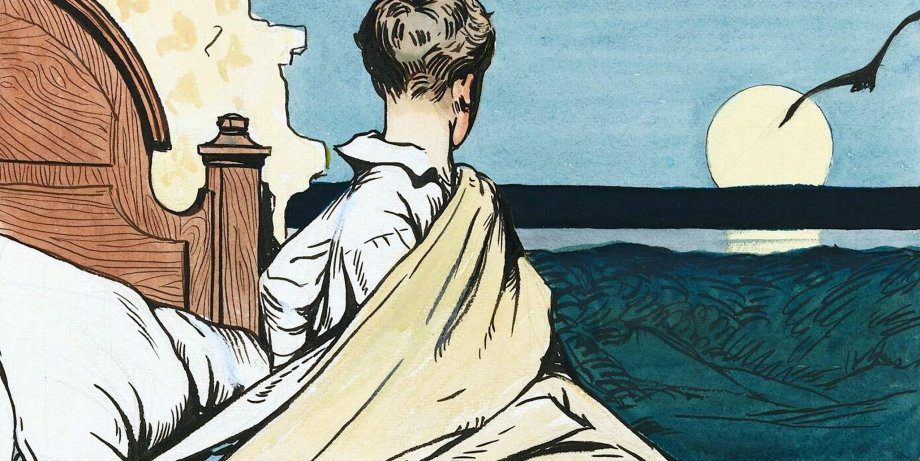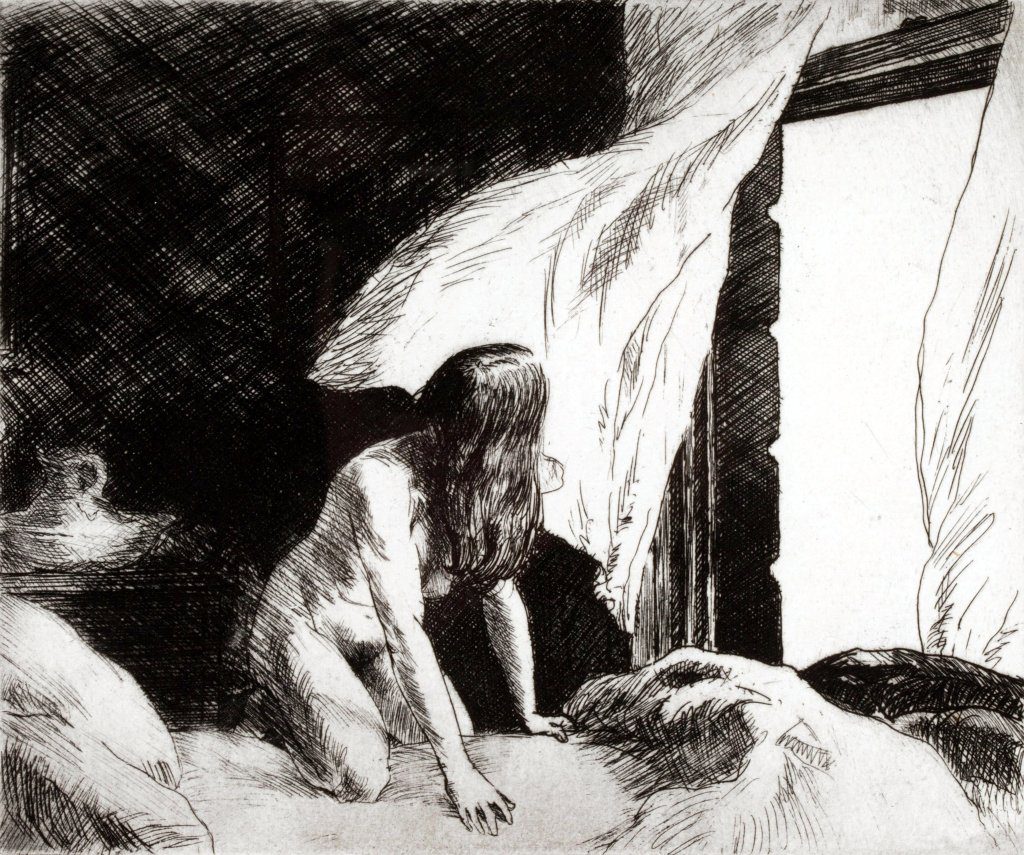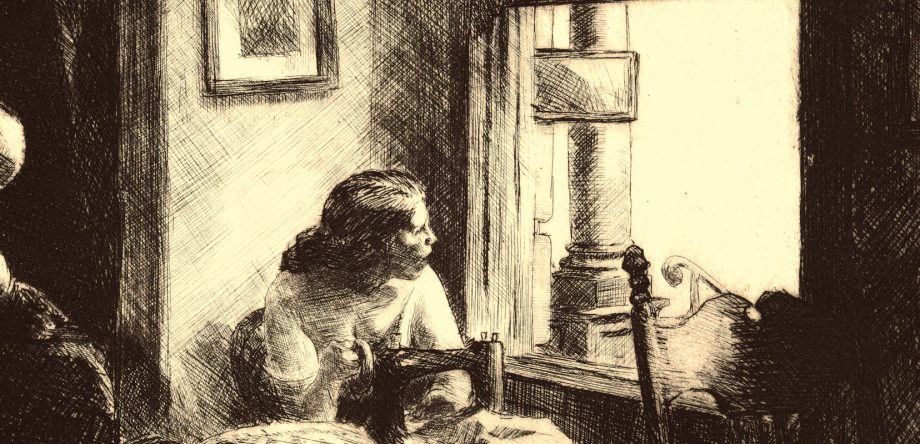Edward Hopper, one of the most renowned American painters of the 20th century, is celebrated for his evocative and introspective artworks. While he achieved widespread recognition for his iconic mid-20th-century paintings, such as “Gas,” it is crucial to delve into his earlier works to fully appreciate his artistic development. Spanning the years from 1906 to 1927, this article takes a closer look at Edward Hopper’s formative years as an artist, exploring the themes, techniques, and influences that shaped his exceptional artistic style.
Emergence of a Style
Edward Hopper’s early works reflect his gradual evolution as an artist, as he experimented with different subjects, styles, and techniques. Initially trained as an illustrator, Hopper’s early works showcased his keen eye for capturing the essence of everyday life, for example his early pen, ink and watercolor artwork “Men Seated at a Café Table” from 1906. Whether it was capturing the architectural beauty of landscapes or the introspective solitude of figures, his paintings exhibited a sense of isolation, quiet contemplation, and a distinct narrative quality.
Themes and Subjects
Throughout this early period, Edward Hopper’s work revolved around themes that would come to define his later career. He had a profound fascination with light and shadow, and the interplay between artificial and natural illumination. His urban scenes often depicted empty streets, starkly lit interiors, and isolated figures, portraying a sense of alienation amidst the rapid urbanization of early 20th-century America. These works encapsulated the mood of modernity, encapsulating the emotional distance and disconnectedness prevalent in society.
Hopper’s penchant for exploring the dynamics of human relationships is also evident in his early paintings. Whether it was through portraying solitary individuals lost in their thoughts or capturing the complex dynamics of couples, Hopper’s work delves into the intricacies of human connection, often hinting at a sense of longing and melancholy.
Influences and Techniques
Edward Hopper drew inspiration from various artistic influences, both domestic and international. The stark yet emotive quality of his compositions can be attributed, in part, to his exposure to the Ashcan School, a group of American realist painters who depicted scenes of urban life. Hopper was also influenced by European artists, such as Édouard Manet and Edgar Degas, whose work emphasized composition, color, and light.
Technically, Hopper’s early works demonstrate his mastery of composition and spatial arrangement. His use of strong vertical and horizontal lines, along with sharp contrasts of light and shadow, creates a sense of tension and drama within his paintings. Hopper’s deliberate attention to detail and precise draftsmanship can be attributed to his background in illustration, which is evident in the meticulous rendering of architectural elements and the human form.
Significance and Legacy
Although Edward Hopper’s early works may not be as widely recognized as his later masterpieces, they offer valuable insights into the development of his artistic style. The themes, techniques, and influences that emerged during this period laid the foundation for the iconic paintings that would later establish Hopper as a leading figure in American art.
Hopper’s ability to capture the nuances of human emotion, the interplay of light and shadow, and the portrayal of urban alienation set him apart as a painter with a distinctive voice. His early works foreshadowed the introspective nature of his later paintings, which would come to define his artistic legacy and influence generations of artists to come.
Conclusion
Edward Hopper’s early works from 1900 to 1927 reveal a captivating journey of artistic exploration and development. Through his careful observation of urban life, use of light and shadow, and depiction of human emotions, Hopper laid the groundwork for his later iconic paintings. As we delve into these formative years, we gain a deeper appreciation for the evolution of Hopper’s unique style and his significant contribution to the American art scene.






